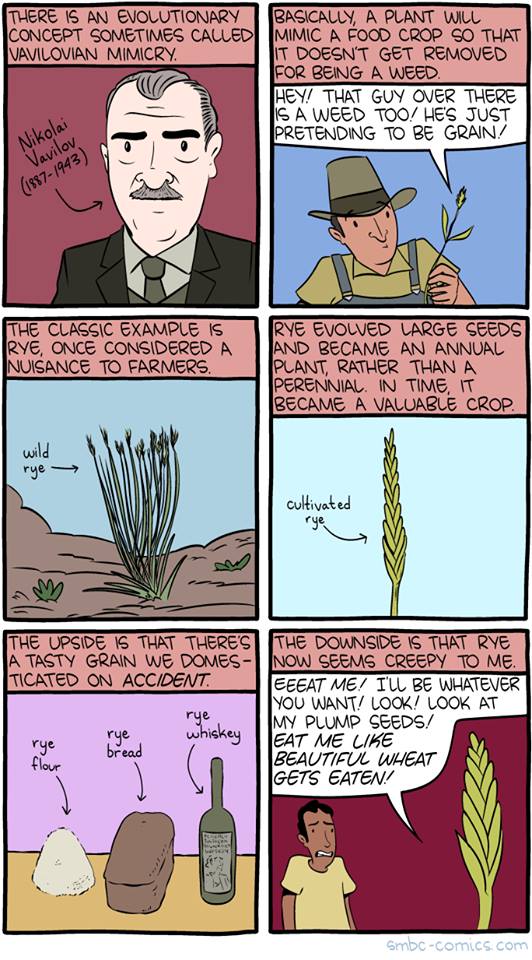- Human and ecological determinants of the spatial structure of local breed diversity. The closer Spanish provinces are in demography, ecology, history and geography, the more similar in their livestock breeds.
- Enhancing the Sustainable Use of Lolium perenne Genetic Resources from Genebanks in Plant Breeding and Research. The importance of international collaboration illustrated yet again. Material best at different things comes from different countries.
- Leveraging the use of historical data gathered during seed regeneration of an ex situ genebank collection of wheat. Accessions should be regenerated at random. From same genebank as above.
- Population and quantitative genomic properties of the USDA soybean germplasm collection. 8 major clusters.
- Assessment of Genetic Variation and Population Structure of Diverse Rice Genotypes Adapted to Lowland and Upland Ecologies in Africa Using SNPs. Lowland NERICA close to indica, highland NERICA close to japonica.
- Do You Conduct International Research? What You Need to Know About Access, Benefit‐Sharing, and the Nagoya Protocol. Quite a lot.
- Pasture intensification is insufficient to relieve pressure on conservation priority areas in open agricultural markets. Intensification relieves pressure on land in Africa, but not in Latin America, where it stimulates increased trade.
- Genetic diversity analysis of the Greek lentil (Lens culinaris) landrace ‘Eglouvis’ using morphological and molecular markers. 400 years old, quite distinct, and with some variation.
- Genetic structure of South African Nguni (Zulu) sheep populations reveals admixture with exotic breeds. Quite variable and not much inbreeding, but gotta watch out the admixture with exotics.
- Is kola Tree the Enemy of Cocoa? A Critical Analysis of Agroforestry Recommendations Made to Ivorian Cocoa Farmers. No, but you wouldn’t think it from Big Chocolate recommendations.
- ‘The Tides Rhyme with the Moon’: The Impacts of Knowledge Transmission and Strong Spring Tides on Rice Farming in Guinea-Bissau. The youth resist.
- Wild Foods: Safety Net or Poverty Trap? A South African Case Study. Depends on the season.
Genebanks training each other
Who says genebanks don’t collaborate enough? Here’s news of the Pakistani and an Australian genebanks spreading the love. Here’s the agenda for the Pakistan workshop, thanks to our mole.
We are at the Workshop on Plant Genetic Resources and Genebank Operations Management System, with #CWR partners from Pakistan, Azerbaijan, Sudan and Malaysia. #SeedConservation https://t.co/N9QSP2F2gU pic.twitter.com/oVWB8xvaWx
— Crop Wild Relatives (@CropWildRelativ) May 8, 2018
Saturday Morning Breakfast Rye

Ensuring the future of coffee
Biz model is growing, having benefits, and impact, and understanding that is better if you share it. @HowardShultz @Starbucks #SaC18 pic.twitter.com/0PqUgLl3Vy
— TechFood Magazine (@techfood_mag) May 7, 2018
Want impact, Mr Starbucks? You could try supporting the coffee diversity conservation strategy for a start.
Featured: Diversification
Jacob has a suggestion for researchers interested in the link between agricultural diversification and nutrition:
We need a new generation of studies that looks at the effects of diversification on nutrition with a broader perspective on the candidate mechanisms for this link.
So, people, get specific.